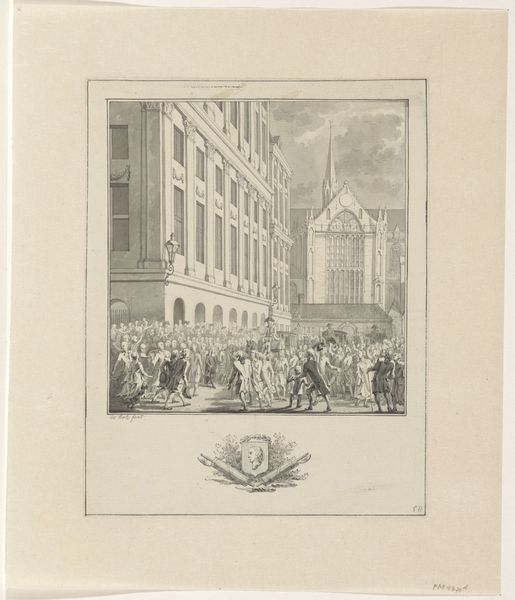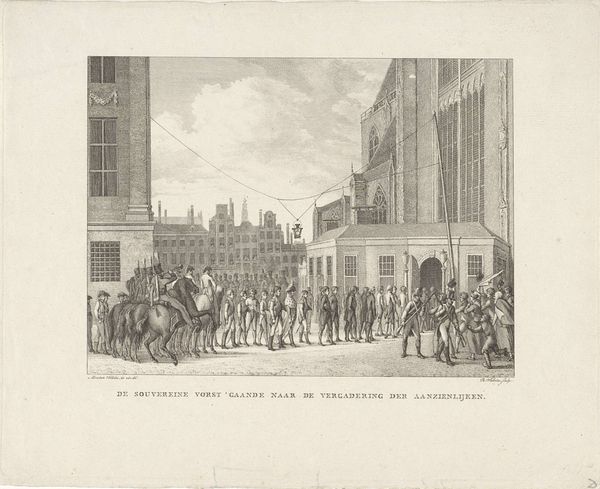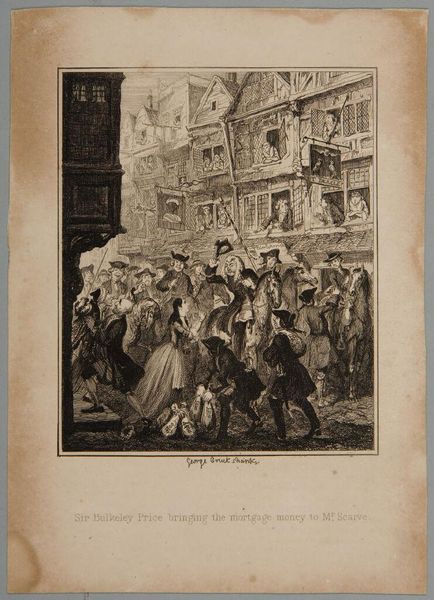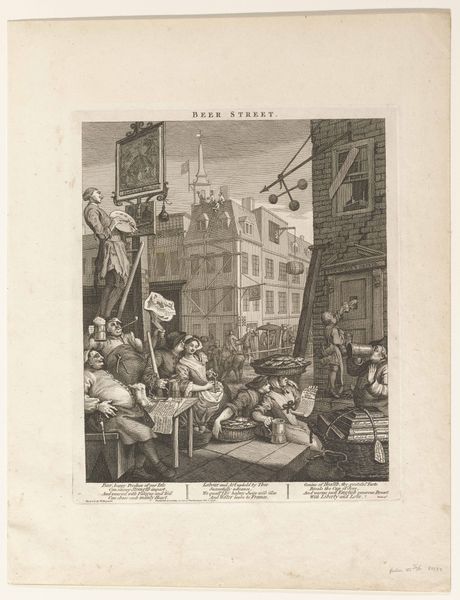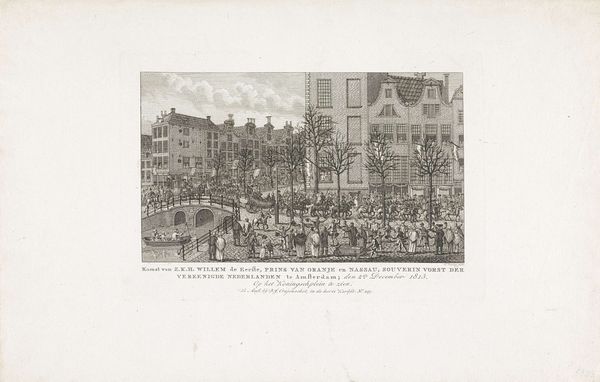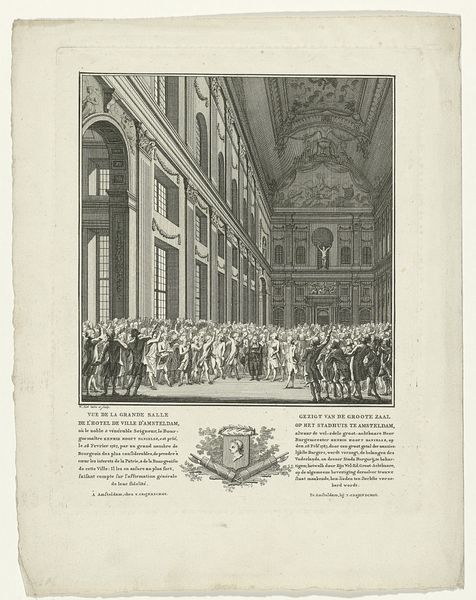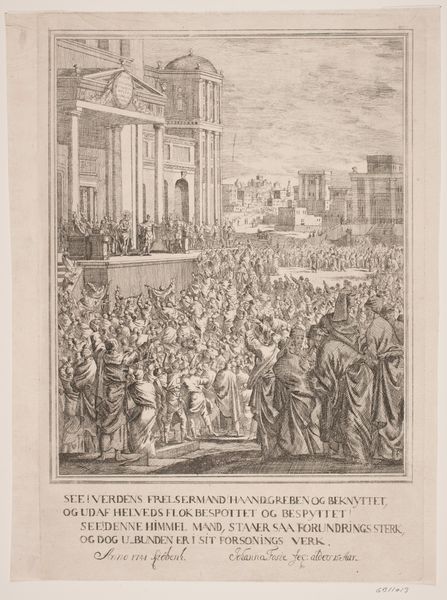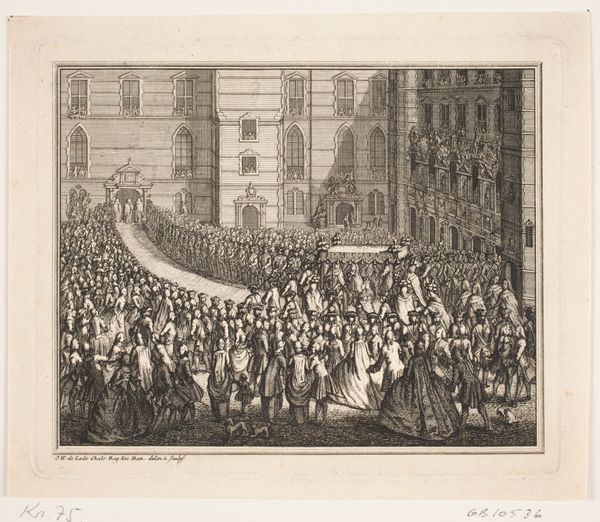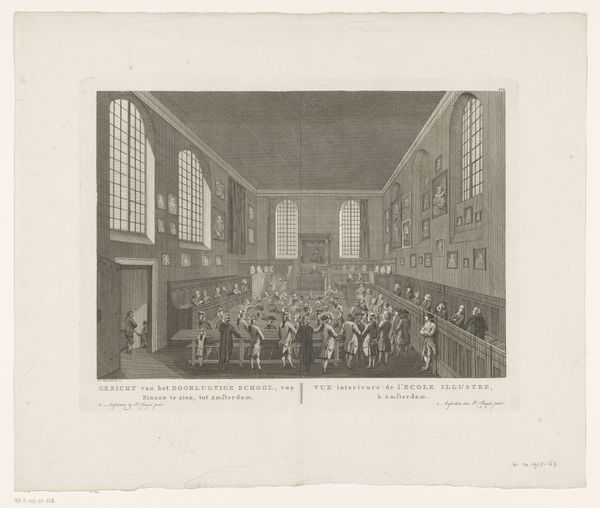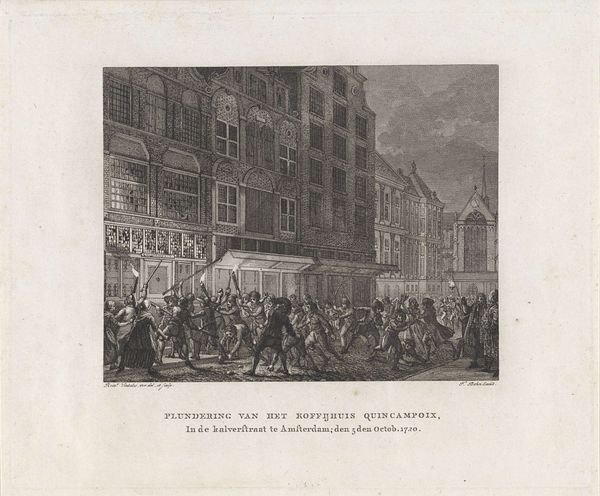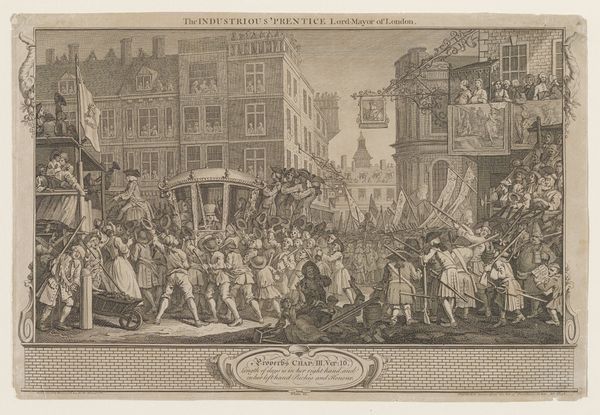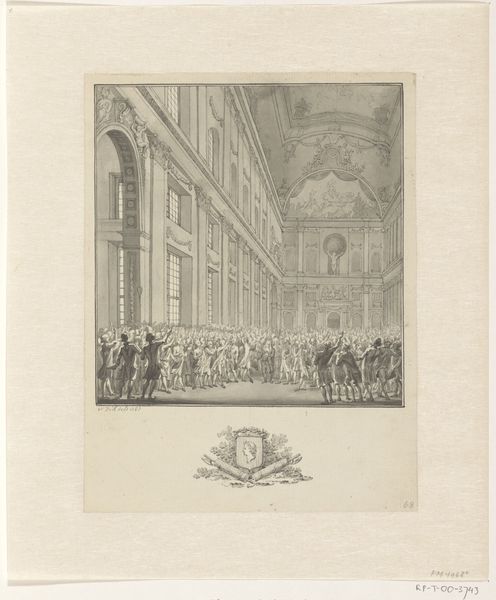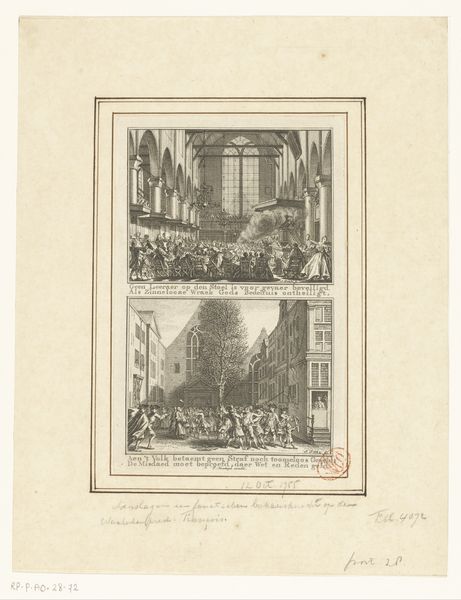
print, engraving
#
neoclacissism
#
dutch-golden-age
# print
#
cityscape
#
history-painting
#
engraving
#
realism
Dimensions: height 242 mm, width 191 mm
Copyright: Rijks Museum: Open Domain
Curator: Let's talk about "Toejuiching van Hendrik Danielsz. Hooft op de Dam, 1787," or "Applause for Hendrik Danielsz. Hooft on Dam Square, 1787." This print is an engraving that depicts a moment in Amsterdam's history. Editor: My first impression is the density of detail—almost claustrophobic in the crowd, and simultaneously quite sterile, due to the medium and lack of color. It feels both active and strangely still. What's going on here, really? Curator: The artwork memorializes a specific historical event. Hendrik Danielsz. Hooft, a mayor, is being cheered after some sort of council separation at Amsterdam's Dam Square, suggesting a celebration of power and perhaps a shift in civic affairs. Editor: It's interesting how the architecture dominates. The City Hall and the New Church serve almost as symbolic witnesses or even silent participants in this political theatre. Is it common to cast architecture this way in prints of the era? Curator: Absolutely, architecture here reflects power and stability; the solid stone structures act as a backdrop for the ephemeral, emotional event playing out in the foreground. Neoclassicism influenced the art world. It suggests a longing for order and permanence in times of upheaval. And it's a statement on Dutch power during that era. Editor: I am compelled to ask, given it's an engraving, what does that production choice, as a physical act, mean? Prints were often about accessibility, mass communication of ideas... but this isn't quite propaganda is it? Curator: Perhaps not propaganda in the explicit sense, but it certainly served to immortalize a particular moment and to cast Hooft in a favorable light. Engravings allowed for wide distribution. People might've tacked a print of this event onto a wall, further emphasizing how the moment served as cultural continuity and social memory. Editor: So the choice of material reinforces its role as a tool for memory, but also quietly emphasizes social values. I see, that tension gives the work its power. Curator: Indeed, it encapsulates a moment poised between history, power, and cultural values—a powerful use of visual language. Editor: Looking at it again with all that in mind, it has evolved in my imagination. Thank you.
Comments
No comments
Be the first to comment and join the conversation on the ultimate creative platform.
